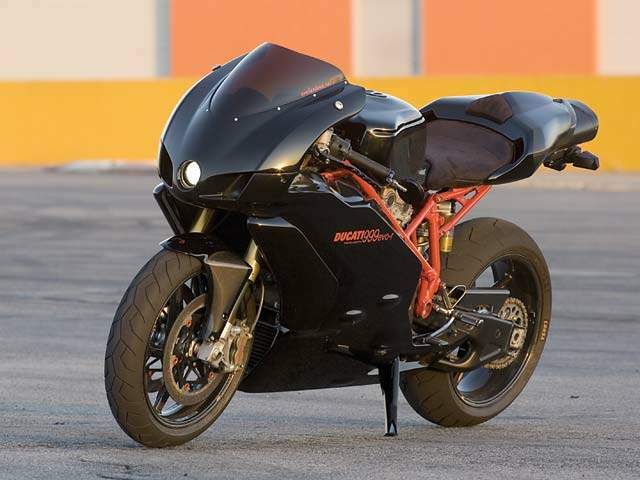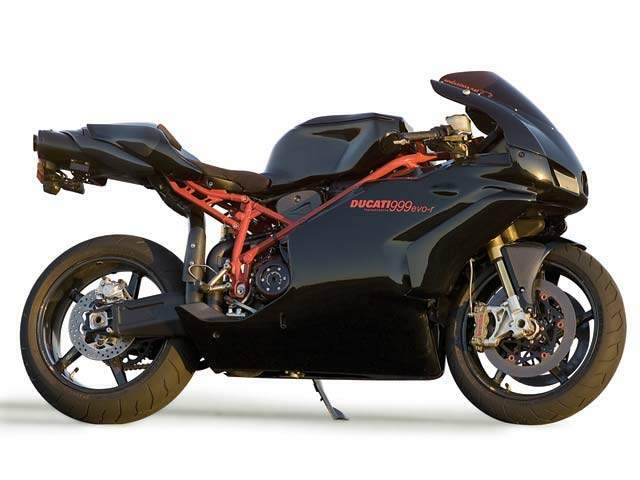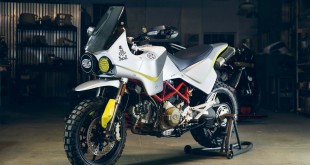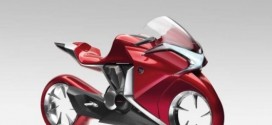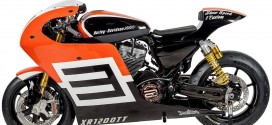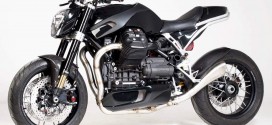For us, Ducati’s 999R is like Hearst Castle, the Eiffel Tower and beachfront Malibu real estate. Short-term access is negotiable, but ownership is out of the question.
At last count, the number of checkbooks around here capable of blowing $30,000 on a sportbike–even the 139-horsepower amalgamation of muscle, moves and Italian sex appeal that trounced Carrithers’s enhanced Honda RC51 in the January 2005 issue–was permanently stalled at zero. Thankfully for Ducati, other enthusiasts are considerably more flush. We do happen to have a Rolodex full of people who know such people. Sometimes we call them.
Ken Zeller always calls back. As the president, creative director and head wrench at Evoluzione Cyclesports (www.evoluzione.net) in beautiful Simi Valley, California, Zeller has an expertise with exotic species–particularly the desirable Italian breeds–that attracts riders who see an off-the-rack ’05 999R as a blank canvas instead of a finished masterpiece. Once hands shake, checks are written, heads scratched, wrenches spun and various large boxes disgorged from the big brown UPS truck, Ken calls and says “I have something here you might like to see.”
This is one of those things a 999R that picks up where the Borgo Panigale works left off. A quick visual inventory reveals the obvious differences. There’s a carbon-fiber fuel cell ($1200) in place of the standard tank. Forged-aluminum Marchesini wheels give way to carbon-fiber BST hoops ($3816) shod with Pirelli Diablo Corsa radials. There’s an hlins R/T fork ($2598) carrying Superbike-spec valving. To the rear, the standard-issue hlins shock gets a titanium spring ($275). Standard brakes come off to make room for Brembo billet racing calipers ($2498) that grab Brake Tech’s swank Ceramic Matrix Composite (CMC) rotors ($1838).
Ducati Corse did all the heavy lifting in the engine department: heavy-breathing heads are fitted with big titanium valves, while titanium connecting rods carry chunky, 104mm forged pistons. The package is good for 139 rear-wheel horsepower at 9750 rpm as delivered, so Zeller left the internals alone. But because the standard catalyst-equipped exhaust plumbing is something of a plug, a full Leo Vince 57/60 titanium system ($3768), complete with ceramic coating inside and out ($350), was fitted. So far we’ve just hit the highlights. Details such as exquisite black paint and red powder-coat on the frame, one headlight instead of two (no more high-beam), Competizione clutch internals and drilled billet cover finish the job. We could go on … but you get the point.
With 1 gallon of super-unleaded in the tank, the result weighs 399 pounds–34 less than a standard 999R. Zeller’s characteristically meticulous tuning pays off with 155 rear-wheel horses at 10,500 rpm–16 stronger than our ’05-spec testbike. An ’05 GSX-R1000, king of the current literbike hill, makes 162 horses 1000 rpm later. It’s also 21 pounds heavier. Impressive? Very. But for a working journalist intent on continued employment, the most imposing number is that $65,000 bottom line. You could buy a new GSX-R1000 for what it would cost to fix a minor tip-over on this thing–or a one-way ticket to Buenos Aires. But there are more productive things to think about when somebody hands over the key to desmodromic paradise.
For starters, we’re on the honor system. There is no key, just a racy little toggle switch ahead of the fuel tank where the ignition switch should be. Flip it to green, thumb the starter and soak up the sort of internal-combustion aria that usually comes from James Toseland’s 999F05–or Bill Elliot’s 750-horse NASCAR Dodge. As neither the neighbors nor the Simi Valley P.D. are likely to appreciate the performance, we’ll head for some nice, twisty mountain pavement where it can breathe. In between, the evo-r flicks through a set of esses more like a pint-sized Japanese 400 with world-class legs than a 999cc Italian thoroughbred. Steering is ridiculously light. Zeller’s clutch and slave cylinder make for easy progress through inevitable L.A. traffic. The Leo Vince exhaust is loud, but that ceramic coating keeps it relatively cool; no more slow-roasting your right boot.
Repeat the survival mantra: “This is a $65,000 motorcycle.” Now aim it down a straight piece of suitably desolate pavement and get some. The tach flicks toward 10,000 in the first three gears while the front wheel loses interest in the pavement and Mr. Sphincter tries to inhale the natty suede upholstery, all in less time than it takes to read this sentence. Still, unlike being shot out of a GSX-R1000 cannon, the twin’s acceleration is much more manageable. Things get very serious to the right of 7000 rpm, but there’s no nasty spike in the power delivery to upset this designer apple cart. An Evoluzione throttle ($90) helps there, slowing down the first half of the grip’s rotation where you need to feed power with maximum precision, then speeding things up a bit from there. Relative to any current liter-class four, this maximum 999 generates staggering corner speed with a lot less effort. Far smoother than any other Ducati, the evo-r makes 80-mph corners feel more like 60. The 16-tooth countershaft and 39-tooth rear-wheel sprocket (with a lightweight D.I.D.520 chain in between) add up to more useable acceleration than the standard R’s 15/36 combination.
With 34 fewer pounds and 16 more horsepower, the evo-r demands more precise rider input than a stock 999R. But for those with the skills to wield it, the rewards are greater as well. These Brembo calipers and ceramic rotors are the most powerful, linear combination we’ve ever tried on the street. Period. Once you’re accustomed to this sort of whoa-power, leaving eyeball prints inside your faceshield is a one-finger proposition, up to and well beyond 100 mph. Still, we noticed a vibration below 50 mph. Brake Tech says it has a fix in the works for it, and it should be cured by the time you read this. They’re very, very expensive brakes, but very, very good ones.
With the steering head set to the track position (23.5 degrees of rake and 3.6 inches of trail) a subtle push on the Fast By Ferracci clip-ons sets cornering trajectory instantly, returning a steady stream of reassuring feedback. Targeted weight loss from the feathery carbon tank and wheels makes the bike feel at least 50 pounds lighter than a standard 999R. And, considering it costs more than twice as much, that’s not terribly surprising. Neither is perfectly compliant suspension or spectacular acceleration. The brakes did catch us off-guard. Wow. But the most pleasant surprise of all is how well everything works together.
OK, so $65K for 399 pounds of carbon-clad Italian lust might seem a twinge over the top. Unlike many exercises in wretched excess–everything those Orange County Chopper folks have ever built, for instance–this one really works. Whether it works well enough to justify the investment depends on how well your portfolio is doing these days. If you’ve got it, we can’t think of a better way to flaunt it. MC
Source motorcyclistonline.com
 Custom Motorcycles Baggers, Choppers, Cruisers, Street Bikes, Trikes, Oldskool Or Newskool Motorcycles
Custom Motorcycles Baggers, Choppers, Cruisers, Street Bikes, Trikes, Oldskool Or Newskool Motorcycles

